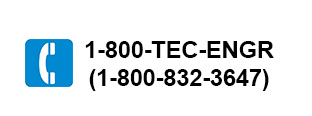Single-Turn
vs. Multi-Turn
In a single-turn encoder, the
encoder shaft makes one revolution for one complete cycle of machine
operation, where as in a multi-turn application, the encoder shaft makes
more than one revolution to complete one machine cycle. Angular
rotation of a crankshaft in a punch press or rotary indexing table are
typical examples of single-turn applications. In linear
positioning, where the encoder shaft makes several turns to complete
total travel, a multi-turn encoders and resolvers are available with
various built-in gear ratios. Incremental encoders can be used
both in single-turn and multi-turn applications.
Ratiometric vs. Phase Method Decoder
The ratiometric converters can track the shaft movements faster and
can be mounted at a greater distance from resolvers as compared to phase
method decoders. They are also more immune to electrical noise and
variations of voltage, frequency, temperature, etc. Due to the
more complex circuitry involved, the ratiometric converters are usually
more expensive than phase method decoders. In general, for more
reliable operations, the ratiometric converter should be used. In
some applications, where wiring run is short and well shielded, system
speed is slow or slow reacting outputs like electromechanical relays are
used and the installation is relatively free of electrical noise, the
phase method decoder may be considered for a cost effective design.
|
 |
Built-in vs. Remote
Decoder
Usually, resolver-to-digital decoders are housed in a separate
enclosure, but resolvers with built-in decoders are also
available. The units with decoder circuitry packaged inside a
resolver-housing combine the ruggedness of a resolver with simplicity of
an optical encoder. However, due to the electronics present in the
same housing, the operating temperature range is considerably reduced as
compared to a resolver with separate decoder.
The foregoing discussions is
helpful in determining as to what type of transducer will be suitable
for a particular application. but before one can finalize a
transducer selection, one needs to obtain additional mechanical and
electrical requirements of the system. Mechanical parameters to be
determined are housing size, shaft size and loading requirements,
mounting style, NEMA or explosion proof rating needed and system
resolution. Electrical requirements are the power supply voltage
and current, output type (TTL, CMOS, sinking, sourcing, etc).
Analog or Digital outputs, output format (BCD, Binary, or Grey) etc.

|


